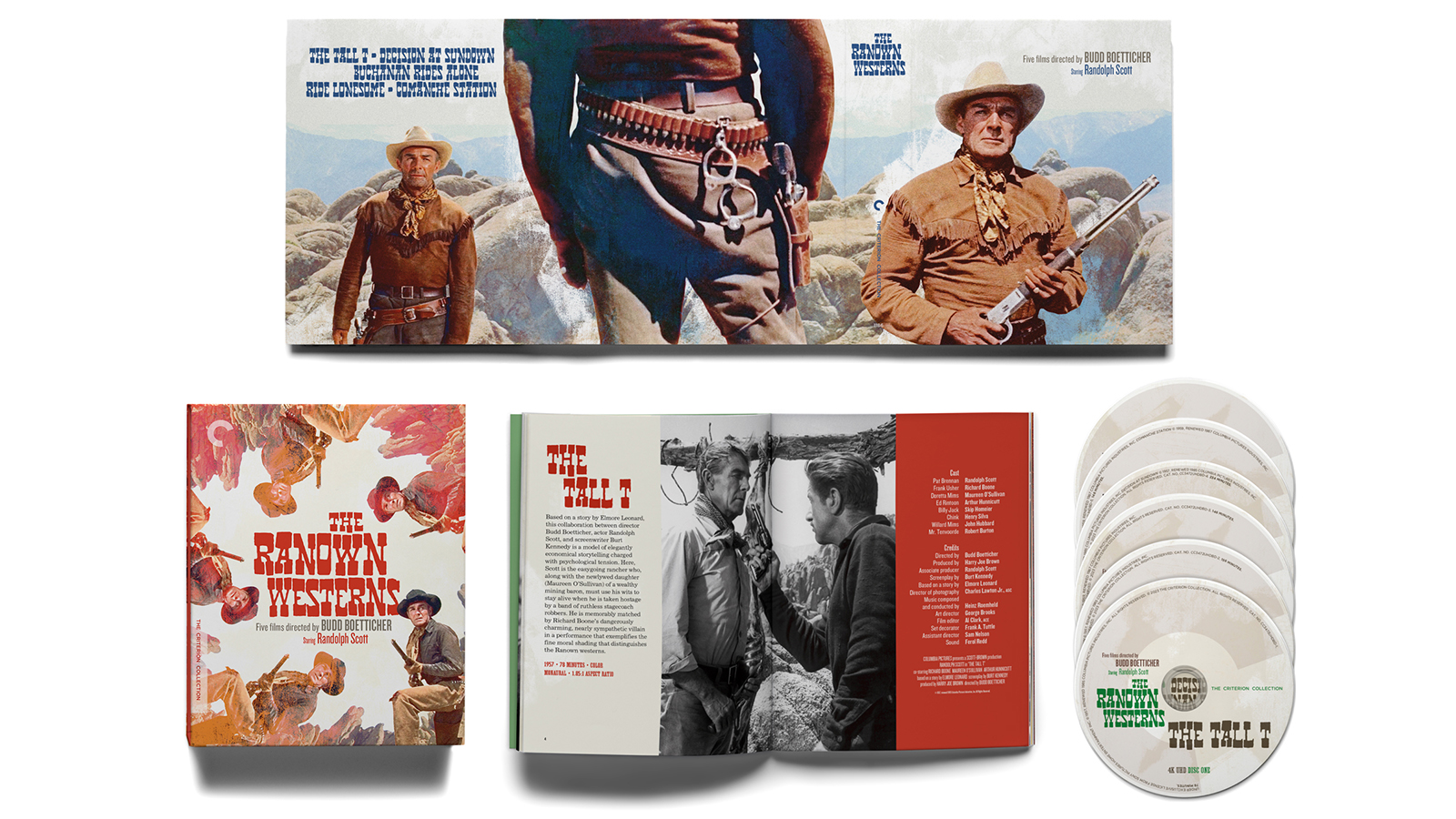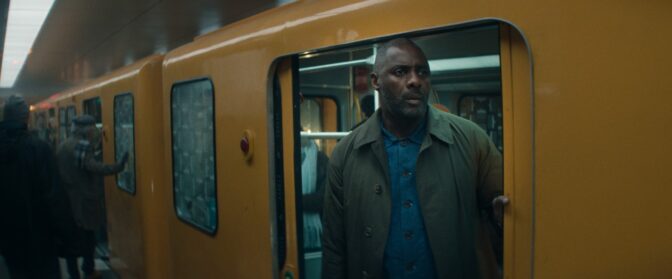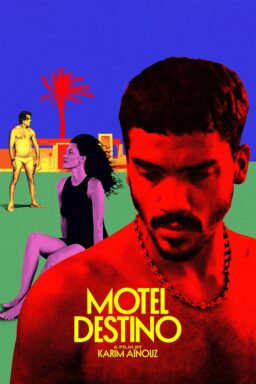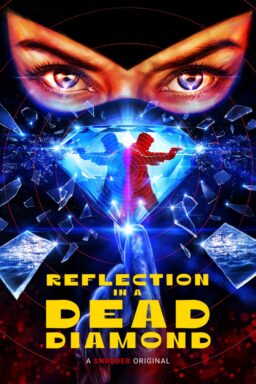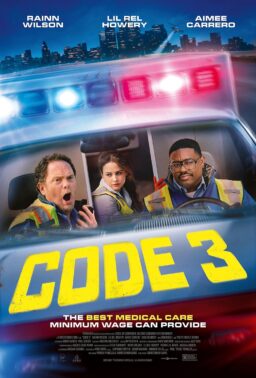The seven films Randolph Scott made with Budd Boetticher, five of which for Columbia with producer Harry Joe Brown, are Spartan in their efficiency and aesthetic. They’re largely set in the blasted, rocky and scrub-brushed Lone Pine, California, its crags and shadows reflected in the angular planes and hollows of Scott’s handsome, aging face here near the end of his career. He was 58 in the John Wayne-produced “7 Men From Now” (1956), Scott’s first collaboration with Boetticher, and 62 when he completed “Comanche Station” (1960) just two years away from his swan song, Sam Peckinpah’s directorial debut “Ride the High Country” (1962). He made ten films in the last six years of a career boasting over 100 credits, and made them count. When he left the business on his terms, he wanted to, as a character says in “Ride the High Country,” enter his house justified.
Criterion has collected five of them, “The Tall T” (1957), “Decision at Sundown” (1957), “Buchanan Rides Alone” (1958), “Ride Lonesome” (1959), and “Comanche Station,” what’s known collectively as the “Ranown Cycle” after Scott and Brown’s production company (a portmanteau of RANdolph and brOWN), in a definitive boxset. It’s the finest run of producer-led independent pictures since Val Lewton’s early-1940s RKO run of poetic, haunted, zero-budget horror films.
Stunning individually, the Ranown Cycle, taken as a whole, tells the story of the American West as a capricious and unforgiving place that threatens at any moment to swallow up the people trying to settle it. Just as the unforgiving landscape was reflected in the lines of Scott’s face, so too is the deep melancholia of an era coming to an end; an overriding sense of loneliness and isolation for men whose skills were celebrated in the taming of the wild, but not welcome in the civilization made possible by their violence and practical, some would say slippery, morality.
The hero in the Ranown Cycle goes by many names but is played by Scott as a single archetype of taciturn masculinity. If there is a single antecedent to Sergio Leone’s “Man with No Name” that made Clint Eastwood an international superstar, it’s not Toshiro Mifune’s Sanjuro from “Yojimbo,” but Randolph Scott in the Ranown Cycle. Scott’s hero doesn’t talk very much; he’s polite to the ladies, he appears long enough to solve a problem, and then disappears back into the wilderness once he does. Society is never valorized, much less repaired by the hero’s intervention.
Though many of these films were shot in the ultra-wide CinemaScope format, Boetticher’s compositions are largely vertical and overlapping. His characters bump against each other in violent conflict or warm bonhomie, layered like a hand of cards in environments bisected by the iron bars of a jail cell or the architectural details of support columns and the deeply-shadowed door frames from which hidden gunsels emerge after dealing sudden, cowardly death. When the dust settles, all Scott’s hero tends to ever walk away with is more terrible, useless wisdom to add to his already incapacitating burden.

These films are so much about alienation that two of the five films in this set have some derivation of the word “lonely” in their title. Each is set in the period before the railroad traversed the vast, perilous expanses separating white settlements on the frontier faster and safer so that all the areas outside the towns are still mythological spaces overrun by pitiless monsters and marked by misadventure. The only thing that can survive there for long are these men, weatherbeaten until their skin resembles the leather of their saddlebags, their best friends, the horses that carry them through the wasteland. Isolation makes them strange. Their knowledge is arcane and unreachable, but through hard, sometimes fatal experiences. The skills required for them to survive the wild make them almost supernatural compared to men softened by defended borders and legal systems, and while they might long for the security that marriage and other domestications might provide for them, they also see the acceptance of these comforts as behavioral and moral mutations made impossible by not only their essential natures but the horrors they’ve seen.
Often, the only thing separating the hero from the villain in the Ranown Cycle is a single decision between doing the right thing and continuing to suffer in exile or doing the wrong thing and reaping the rewards of retirement of ease and plenty. In Jim Kitses’ exceptional study of the Western Horizon’s West, he writes, “The moral of Boetticher’s films is thus a simple one: everyone loses. Life defeats charm, innocence is blasted.” The only prize in these films is more knowledge of our fallen state, and that’s really no prize at all.
Based on an Elmore Leonard story called The Captives, “The Tall T” finds Scott as ramrodder Pat Brennan who makes a rare journey into town where, after losing his horse in a wager with a wily cattle rancher, hitches a ride with his old pal, veteran stagecoach driver Ed (Arthur Hunnicutt) as Ed drives newlyweds Willard and Doretta Mims (John Hubbard and Maureen O’Sullivan) to their honeymoon. Stopping at a way station where Brennan has promised a bright-eyed kid some store-bought candy, they find themselves ambushed by Frank Usher (Richard Boone) and his henchmen, the quickdraw Chink (Henry Silva) and psychotic Billy Jack (Skip Homeier), who have killed the station manager and his son, dumping their bodies in the well. The well is where Ed’s headed, too, when he’s picked off his perch.
The landscape has swallowed these innocents whole, characters who open the film by expressing to Brennan their desire to escape the unprotected frontier to live out their lives in the city. Another stagecoach driver in “Ride Lonesome” says the railroad company and its track teams are “layin’ like hens,” so it’s only a matter of time before the stage as a means of conveyance is obsolete. Civilization is coming to save them, but it doesn’t come in time. Brennan is saddled now with the need to avenge the murder of his friends and the need to protect the swiftly widowed Doretta, who is betrayed by loathsome capitalist Willard, whom both Brennan and Usher instantly despise.
The real villain of the Ranown films are men incapable of privileging people over possessions and status and selling over ephemeral qualities of honor and loyalty to social and material gain. Men like Randolph Scott’s hero are survivors, but their kryptonite is the death of traditional values in the face of rapid industrialization. For as much as nature is hard, even savage, in these pictures, it’s a romanticized manifestation of a purer, more honest version of the human animal. You’re going to die, at least die justified.

Of the five films in this set, “The Tall T” comes the closest to providing Scott with a traditional, matrimonial ending. After punishing the guilty for crimes of attempted rape, usury, and murder, Brennan puts his arm around Doretta and promises her that it’s “going to be a good day.” He has rejected Usher’s expressed desire to seduce Doretta and take her as a bride just as he’s rejected the notion of leaving a life on the open prairie. I take his kindness to Doretta at the end not as a suggestion they’ll marry but rather a mere platitude or, should one err in favor or the romantic, that Brennan knows his usefulness is limited and time is short. It’s best to celebrate the little victories when they occur.
Film scholar Jeanine Basinger provides a commentary for “The Tall T” that goes a little long on narrating the action but still manages to provide a working foundation for key themes in Boetticher and Scott’s collaborations. As with each of the selections in this set, a vintage trailer is included with the film itself, offered in 4K/UHD sans special features and Blu-ray versions packed with diversions. The video quality is exceptional, as would be expected of any 4K upgrade. But the show’s real star is the uncompressed audio mix that allows these minimally-budgeted pictures to feel epic in their scope and depth.
Compare the relative if ironic optimism of the ending of “The Tall T” against the relentless darkness of “Decision at Sundown,” where Scott plays Bart Allison, a man tortured by rage and grief who seeks vengeance against fat cat Tate Kimbrough (John Carroll) whom he blames for sullying his wife’s honor, leading to her suicide. Bart is accompanied by his best friend Sam (Noah Beery Jr.) on this errand, the pair interrupting Tate’s wedding by refusing to give up their firearms at the church and generally causing a scene. As the film progresses, Tate’s would-be bride Ruby (Valerie French) starts developing questions about her beau, leading to a moment where Tate is forced to reveal to her how Bart’s lost beloved was not only not a blushing bride but maybe not his bride. Bart is blinded by his narrative, though, pushing the good counsel of Sam away only to see Sam gunned down by one of Tate’s stooges. Alone now in the world and on a mission that seems increasingly quixotic, Bart, his hand injured in what functions suspiciously like stigmata, challenges Tate to a duel before Ruby heroically intervenes.
If Bart is a martyr, as his torment and physical wounding suggest, he is a martyr only to his mulishness and tendency toward violence. In pursuit of a just cause, he would be seen as a tragic hero motivated by chivalry. In this case, he’s just a pathetic drunk with a persecution complex. “Decision at Sundown” describes how fine a line is between a good cause and a futile and embarrassing one. The film indicts organized religion with a tipsy reverend (Richard Deacon) quick to pocket stray cash, a compromised constabulary, and all the agencies of man-made order with a swift and merciless shorthand. The film’s only innocent characters, Sam and Ruby, are ultimately prey in a universe awash with predators. Director Taylor Hackford provides a brief, substanceless introduction.

My favorite of the uniformly-exceptional films in this collection is the lesser-known “Buchanan Rides Alone.” In it, Scott as Tom Buchanan is pulled into a struggle for power between members of the dysfunctional Agry family in the town that bears their name. The destructive influence of money hangs over the piece immediately as young, drunken, big-talking thug Roy Agry (William Leslie) tries to start a fight with Tom and earns a sock to the jaw as his reward. Later, he catches a bullet from vaquero Juan de la Vega (Manuel Rojas), the son of a proud Mexican family, avenging the honor of his sister, thus garnering the wrong kind of attention for both Juan and Tom whom the Agrys in power blame for being in cahoots. Amid all the shenanigans, Tom befriends a young cowboy, Pecos (L.Q. Jones), hired to assassinate him but who changes his mind when Tom agrees with him that a “man’s gotta be loyal to something.”
This is an appeal to basic decency, even in the face of institutional pressure to act in the interest of a corrupt ruling class. It captures a sweet, egalitarian spirit in a piece that hinges on the love between fathers and sons, brothers and sisters, and a loner like Tom who softens at the prospect of helping a kid heading down the same hard road as he has toward a softer landing. The “good” of nature is thus expressed through various relationships driven not necessarily by the accident of blood but by complementary moral compasses pointing in the same northerly direction. The villains of the piece, ruined by greed, are all blood relations who should have risen above but prove too weak before their golden calves. Hackford provides another brief, light introduction.
“Ride Lonesome” is paired with a five-minute Martin Scorsese introduction that comes with the tidbit that he’s often used this film and Scott’s performance in it as a reference for actors in his own films. He mentions “The Departed,” in particular, to impart the sense of loneliness that blooms in men of essential moral decency trying to navigate an indecent landscape.
As the film opens, Scott is bounty hunter Ben Brigade, who apprehends outlaw Billy John (James Best), ostensibly to take him to his gallows in Santa Cruz. At another stagecoach station, abandoned so that it might be the same stagecoach station from “The Tall T,” Ben finds himself under siege with fellow bounty hunters Sam (Pernell Roberts) and Whit (James Coburn) along with the absent station master’s wife Carrie (Karen Steele) as Native Americans attack, enraged by incursions on their territory.
On the surface, this version of Scott’s hero seems unusual for his focus on a bounty. But it’s soon revealed that he has no interest in collecting on Billy John but rather is using him to lure his brother Frank (Lee Van Cleef) into battle—Frank who kidnapped and murdered Ben’s wife when Ben was a sheriff and Frank his escaped prisoner. At the center of the drama is a dead “hanging” tree, set off by itself in the middle of a clearing stark and haunted. His task completed, Ben sets it on fire. He’s a man in search of absolution. It’s unclear, even with this ritualistic act of cleansing and even after his retributive act of violence, that any real resolution is possible. Historian Jeremy Arnold provides a sterling commentary track to this film: relaxed, informative, and evocative of several approaches to appreciation.

The last film in the set is perhaps the best-known of the pictures, “Comanche Station.” Scott plays Jefferson Cody, a man specializing in “rescuing” women kidnapped by Native Americans and integrated into their tribes. He liberates Nancy (Nancy Gates) as the film opens, the wife of a man offering $5,000 for her return, though it’s not clear he’s ever aware of the reward. Cody is not motivated by profit. Their traveling companions, however, the loathsome Lane (Claude Akins) who has been court-martialed from the army for slaughtering non-combatant Native Americans.
Indeed, the Comanche of the title is agitated by a band of white mercenaries, collecting scalps from murdered Native American women and children, providing a constant backdrop of danger from without as Lane and his henchmen conspire to murder both Cody and Nancy to collect the “dead or alive” booty from within. Lean even by the standards of these films, each barely over 75 minutes long, “Comanche Station” has no fat on its frame. Every camera set and motion tells a story of character and place, and anchoring it all is Scott’s steely, almost silent performance as a man driven nearly mad by his desire to restore order while understanding how futile such endeavors are in the midst of man’s rapaciousness and amoral, chaotic self-destructiveness. It’s so artfully constructed a piece that even a 20-minute version of it, hacked to pieces and transferred to a blurry Super 8 home movie version of it that traveled around schools (included as a special feature herein), still manages to convey some of the power of its meditation on manhood and the tension between self-interest and community. Hackford provides a commentary long on anecdotes about Boetticher’s interests in bullfighting, his choices of setting, and the growing awareness of Boetticher’s massive influence on modern motion pictures.
An entire Blu-ray disc in this six-disc set is dedicated to further supplementary material. It’s an embarrassment of riches that includes a 2006 documentary called “Budd Boetticher: A Man Can Do That” (120 min) which features a wonderful career-spanning look at the director’s work with talking heads Hackford, Clint Eastwood, and Quentin Tarantino. An episode of the French documentary series “Cinéma, De Notre Temps: Boetticher Rides Again” (1995) (59 min) is a fascinating time capsule as a French film crew spend days with the director only to get dressed down by him for trying to paint him as some kind of “cowboy” when in reality, Boetticher says, he’s just a filmmaker who directed fifty movies, some of which were westerns. Dutifully, the documentarians record every bit of their shaming by a visibly furious director and then return to do as he suggests and cover in greater depth the rest his career as an artist outside of the genre.
Taylor Hackford’s 1971 documentary “Budd Boetticher: A Study in Self-Determination” (60 min) is a rather dry, almost monologue by Boetticher telling various anecdotes from his career and, at one point, stepping into a bullfighting ring and demonstrating a few of the moves he learned once upon a time in Mexico. It’s like time spent with the man which is good, but it lacks a point of view, making it a bit of a rough go. “Visiting Budd Boetticher” (37 min) is an episode of a show called “Fiction Factory” from 1999 that finds Boetticher expressing his love for Lawrence Kasdan’s “Silverado,” and a few tales from his career, most of which are repeated elsewhere. I do like how he casually refers to Mel Ferrer as “a schmuck.” An audio interview with Jim Kitses (62 min) is scholarly and deeply informative. I can’t recommend Kitses’ book more highly. Much of the substance of this piece is dissected therein.
Finally, Farran Smith Nehme provides a lovely piece on Randolph Scott’s career, demonstrating her typical expertise and intimidating knowledge of films I’ve often never heard of. Rounding out the presentation, Tom Gunning and Glenn Kenny provide excellent, expansive essays for the booklet. I am especially grateful for Kenny’s take on the Henry Silva character’s name “Chink,” helping me to bridge it with his performance later as an Asian assassin in John Frankenheimer’s 1962 film, “The Manchurian Candidate.”

